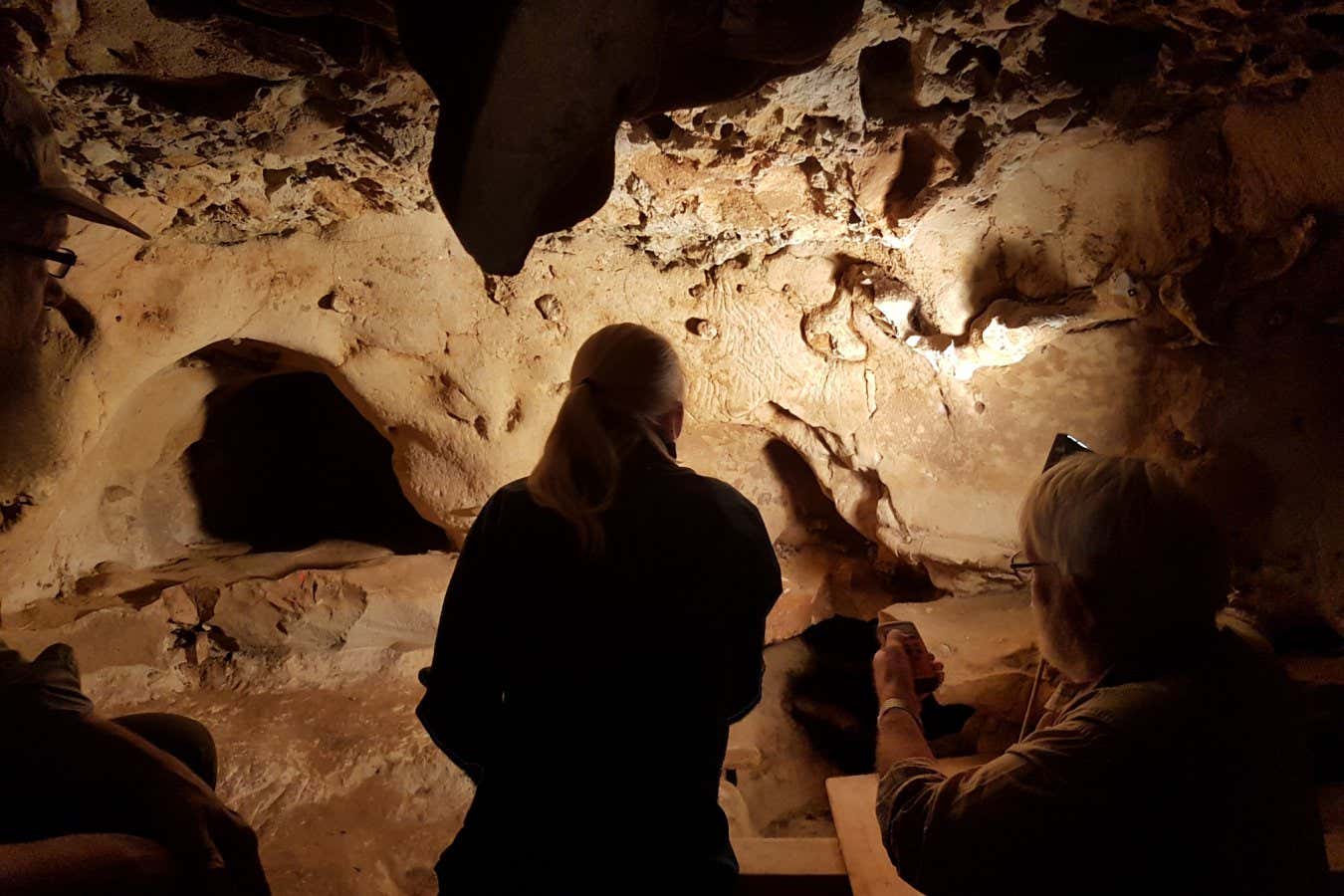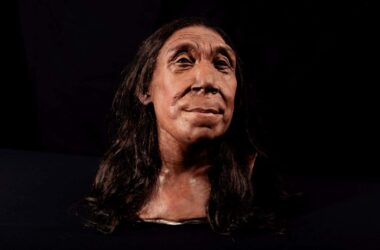Researchers inspect markings made by Neanderthals on the wall of La Roche-Cotard cave in France
Kristina Thomsen, CC-BY 4.0
Neanderthals used their fingers to carve symbols into the wall of a cave in France at least 57,000 years ago. These engravings are considered as some of the oldest known examples of Neanderthal art and possibly the oldest. The markings were discovered in La Roche-Cotard cave in the Loire valley that has been excavated since 1912.
The cave consists of four chambers, with Neanderthals living in the front chamber and accessing the second and third. Excavations have unearthed numerous Mousterian stone tools associated with Neanderthals. In the third chamber, called the pillar chamber, researchers found eight panels covered with finger markings. The markings include straight lines, circles, ovals, and even larger patterns. Some panels have clusters of dots.
While the meaning of these engravings is still unclear, evidence suggests that they were made by Neanderthals and not modern humans. Mousterian tools found in the cave and the timing of the sediment dating indicate that the cave entrance was sealed around 57,000 years ago. Neanderthals lived in Europe and parts of Asia for hundreds of thousands of years, disappearing around 40,000 years ago.
Neanderthal art has been a topic of controversy, but recent discoveries in Spain and Gibraltar have provided strong evidence that Neanderthals were capable of creating symbolic artifacts. However, these examples seem to be one-offs, unlike prehistoric art created by modern humans, which often contains repeating elements.
It is possible that Neanderthals engaged in symbolic behaviors with little or no shared meaning, similar to doodling shapes in the sand. It is also speculated that modern humans may have learned some symbolic behaviors from Neanderthals through interbreeding.
Topics:








